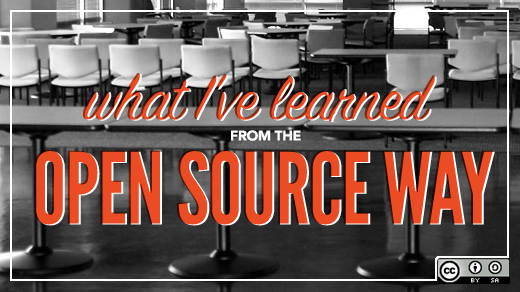We're in the midst of a new economic and technological era, something people often refer to as "The Fourth Industrial Revolution"—or "Industry 4.0" for short. Smart, connected, and responsive technologies are merging with environments that are becoming more data-rich, and, as a result, digital disruption to more traditional business models is becoming the norm, not the exception.
Lots of people are scrambling to determine how all this upheaval will affect not only what they do, but also how they do it. As they're doing this, they're coming to a crucial realization: Organizational structure—how you work, the culture that permeates and guides all your activities—matters more than ever. That's because it's the most important factor in a group's ability to produce new and exciting innovations, and today, that ability to innovate is without a doubt one of the most valuable resources an organization can harness as it tries to gain competitive advantage.
When I wrote The Open Organization a year ago, I wasn't trying to claim that my colleagues and I at Red Hat, the world's leading open source software company, had discovered some definitive answers to the questions digital disruption is raising. I recognized that our story—and the way we work every day—contributes something important to the dialog around it. Even now, one year later, I can't say we've found all the answers. However I can say we're seeing the conversation accelerate. In the Open Organization section on Opensource.com and elsewhere, people are discussing, debating, and calling into question some age-old wisdom about work, management, and leadership. I'm proud of the role Red Hat is playing in catalyzing that conversation.
And Catalyst-In-Chief, a new book we're launching today, contains my contributions to it. Since writing The Open Organization, I've found it extremely important to continue thinking, writing, and talking about both the changes we face and the promise open source thinking holds for helping us navigate them. Quite simply, the past 12 months have been a year of wonderful conversations about the open organization. They've been filled with insights, questions—and, yes, even a few doubts—about the shape the future of work will take.
Important challenges remain. Think of the pyramid I sketched in The Open Organization to explain the way networked organizations should rethink management's core dynamics. Open organizations, I said, always begin with "why"—with instilling passion and purpose in everyone who joins them—so that mission becomes the driver of innovation. That's the base of the pyramid, the foundation. That passion, purpose, and engagement "bubble up" to the top of the pyramid, which is concerned with "what"—what leadership does to create the most fitting and productive contexts for that passionate work.
In the middle of the pyramid is "how," the concrete and specific activities that occur when leaders-as-catalysts and associates-as-engaged-participants meet. It's that middle part that continues to prove most mysterious and elusive to organizations today. How specifically can we develop tactics to harness and direct passion and performance? How can we systematize our most successful structures? And how do we share our best practices and our failures?
These are the questions that will drive the second year of conversations about open organizations. You can play an important role in those conversations. At the conclusion of this book, you'll find resources and avenues for connecting with the open organization community, so you can chat, think, and learn with us.
I sincerely hope you will.
A version of this article originally appeared as the introduction to Catalyst-In-Chief, a new publication from Opensoure.com, which is available now.






Comments are closed.